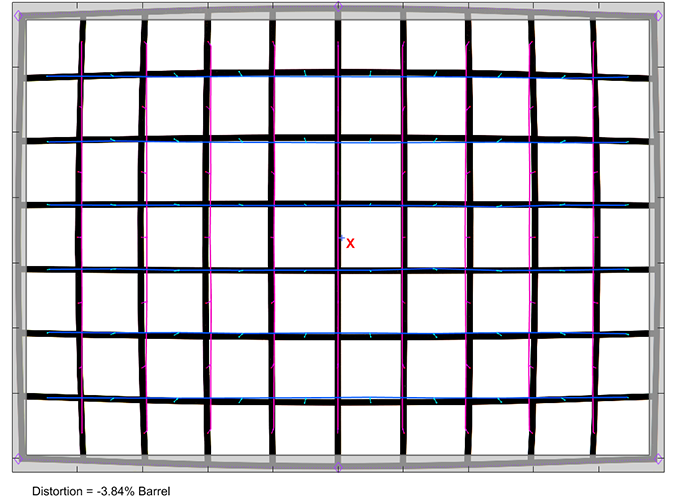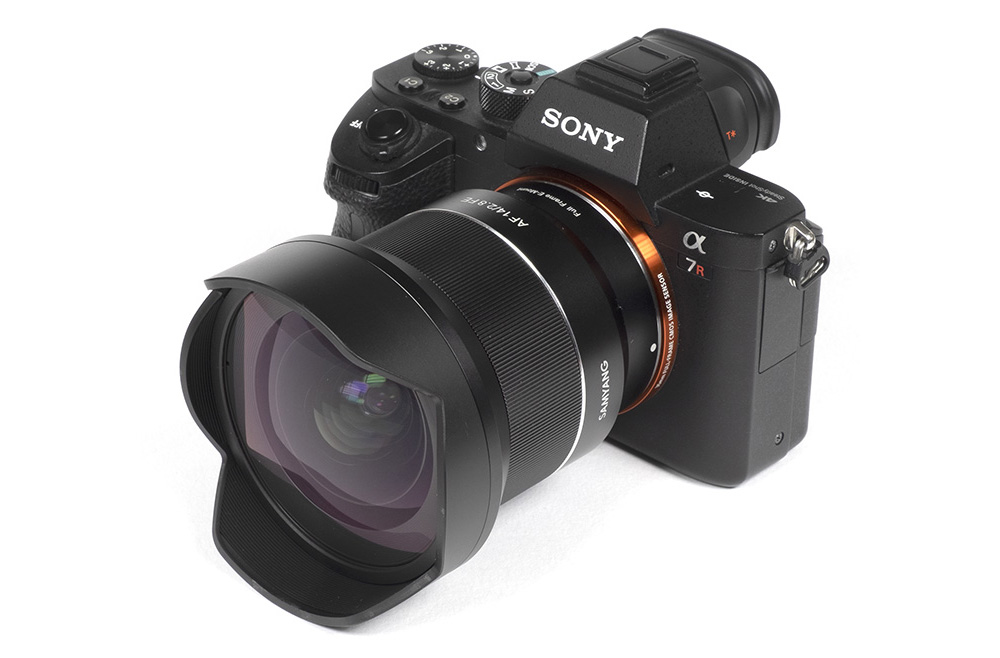by Klaus Schroiff, published July 2020
Introduction
Manufacturers love to explore the extremes because that’s a way of differentiating their offerings from the competition. One end of these extremes is in the ultra-wide segment and the Samyang AF 14mm f/2.8 FE is one of the examples here. As of the time of this review, it’s still the widest autofocus prime lens for Sony FE cameras although there are zoom lenses that go even wider.
There is another aspect that is distinguishing it – its price tag of just 500USD/EUR. Of course, this raises the question of what degree of performance you could possibly expect given the engineering constraints within the given price frame. It’s worth noting that the lens is also available under the Rokinon brand name (primarily in the US). Strangely, the Rokinon is a little more expensive than the OEM version.
The build quality of the AF 14mm f/2.8 FE is very good. The lens body is made of metal including the smoothly operating focus ring. Weather-sealing is not provided though. The fixed part of the barrel has a satin finish which is a little slippery. As you can see below the front element is slightly protruding so it’s not possible to mount front filters. Typical for such lenses, it features a built-in, petal-shaped hood which is a good idea for protecting the big vulnerable front element anyway. The lens cap clamps to the lens hood which is the common approach for such lenses as well.

The AF motor is fairly quick and noiseless. Manual focusing works by-wire thus you are driving the AF motor when turning the focus ring. This works quite well. The lens is also compatible with Samyang’s “Lens Station” ($99) which can be used for firmware upgrades, focus calibration, and manual focus tuning.
| Specifications | |
|---|---|
| Optical construction | 14 elements in 10 groups inc. 3x aspherical & 2xED elements |
| Number of aperture blades | 7 (rounded) |
| min. focus distance | 0.2m (max. magnification 1:8.3) |
| Dimensions | 86×97.5mm |
| Weight | 505g |
| Filter size | – |
| Hood | petal-shaped (built-in) |
| Other features | – |
| Mount | Sony FE, Canon RF |
Distortion
Ultra-wide lenses tend to produce a heavy amount of image distortion and the Samyang AF 14mm f/2.8 FE is no exception here with a barrel distortion of ~3.8%. However, it’s worth noting that Samyang improved this quite a bit compared to their early MF 14mm f/2.8. Correction profiles are readily available for the lens and if applied, there’s barely any distortion to speak of.


Vignetting
Another typical issue with ultra-wide lenses is vignetting. This is pretty much unavoidable. However, the light falloff is comparatively moderate at ~2.3EV (f-stops) and f/2.8. This is, of course, very visible but we’ve seen a lot worse. Stopping down improves the issue but the vignetting stays just above 1.4EV even at f/11. That’s all less of a problem with activated auto-correction which reduces the vignetting down to ~1.2EV at maximum aperture and it’s just noticeable from f/4 onward.

MTF (resolution)
The Samyang AF 14mm f/2.8 FE struggles a bit with respect to resolution although you can’t expect such a lens to be perfect anyway. On the positive side, the dead center is very sharp at f/2.8 and the broader center zone is also pretty good. However, the outer image field is soft. The center zone improves quite a bit at f/4 but the corners remain unimpressive. The best results are achieved around the f/8 mark. The center quality is impressive and the borders are good at this setting. The corners are at least acceptable. Stopping down further doesn’t increase the quality any further due to diffraction effects.
The field curvature is moderate. The centering quality of the tested sample was Ok. It’s worth noting that the image quality decreases substantially at close focus distances.
Please note that the MTF results are not directly comparable across the different systems!
Below is a simplified summary of the formal findings. The chart shows line widths per picture height (LW/PH) which can be taken as a measure for sharpness. If you want to know more about the MTF50 figures you may check out the corresponding Imatest Explanations

Chromatic Aberrations (CAs)
Image auto-correction will take care of lateral CAs (color shadows at the image borders). It’s a lossless procedure so it doesn’t have any negative impact.
The native CA characteristic is reasonable for such a lens. The CAs vary between a width of 1.3px and 1.6px on the average at the image borders. This can be visible but it’s not really severe yet.

Sample Images
Competition
Sony has a couple of (very good) zoom lenses that rule the high-end of the market but there’s nothing that comes close to the Samyang (shown to the left) in terms of pricing. If we stretch things a little, we may include the Sigma 14mm f/1.8 ART DG HSM – which is essentially an adapted DSLR lens. Combined with the much larger aperture, it’s a HUGE lens in comparison. But … it is also sharper than the Samyang. Another option – albeit a manual focus one – is the Laowa 15mm f/2 Zero-D. It is more expensive still but also a full stop faster. Optically they are in the same league although we’d give the edge to the Laowa here. The Laowa is also impressively small in comparison.

Visual comparison courtesy of camerasize.com.
In the introduction, we asked the question of whether a 14mm f/2.8 and a low price tag 500USD/EUR is a winning combination. Most users want their ultra-wide lenses to be sharp way into the far corner. And that's where the Samyang AF 14mm f/2.8 FE struggles. The center quality is sharp enough but the corners are soft at f/2.8 and f/4. Now whether this is really a relevant shortcoming depends on what you are shooting. If you use large apertures for shallow depth-of-field images only, it'll be a nonissue. For astrophotography, it's not ideal though. Stopped down to f/8 the overall quality is good for such a lens. The amount of vignetting is relatively well-controlled but clearly visible unless image auto-correction is activated. Image distortion is heavy in RAW files but, once again, this can be corrected in post. Lateral CAs are Okay for such a lens. We haven't formally tested the quality of the bokeh. When looking at our sample images taken at f/2.8, you may agree that the bokeh is quite rough. However, let's be fair here - this applies to the vast majority of ultra-wide lenses.
In terms of build quality, the Samyang lens is quite convincing. Nothing wobbles and most of the lens is made of metal. We aren't a huge fan of the satin finish but that's largely a matter of taste. The lack of weather-sealing is a bit unfortunate but not surprising in this price class. The AF is plenty fast for an ultra-wide lens, and it's noiseless, too.
Overall we aren't overly thrilled by the optical performance. However, you also have to recognize the fact that the price point of the Samyang AF 14mm f/2.8 FE is extremely low for a such lens. If you own a 16/24 megapixel full-format or APS-C camera you also won't really notice much of an issue (assuming you get a good sample) - that's also something to keep in mind.
-
Optical Quality
-
Build Quality
-
Price / Performance


